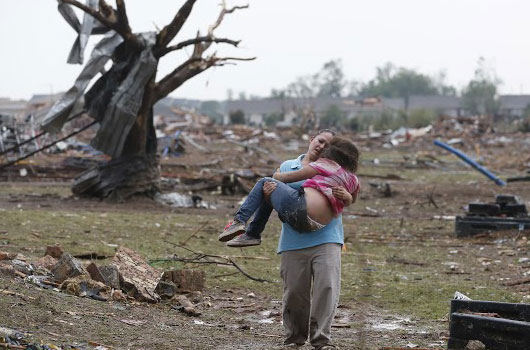
Motherhood brings with it an infinite number of joys—but it can also bring a seemingly endless amount of concerns, too. Frightening headlines pop up, well-meaning fellow moms spread the word about an illness or affliction that they read online or heard about at a playdate, and it can be hard to keep up with what’s real and what’s rumor. Here are some children´s health issues you should know about.
THE ISSUE: A Rise in Rates of Autism
WHAT IT IS: Sometimes a chart is worth a thousand words. On the CDC (Centers for Disease Control and Prevention) website’s section on ASDs (Autism Spectrum Disorders), there’s a graph that speaks for itself. Titled “ASDs Per 1,000 Children,” the graph displays the rate of ASD dating from 2002 to 2008—and the line charting the disorder’s rise is a straight line going up, up, up.
To try and determine what this trend means, first we have to understand what ASDs are. As described by the CDC, ASDs are “a group of developmental disabilities that can cause significant social, communication and behavioral challenges.” In other words, it’s not just “autism” as we may understand it, but a spectrum of disabilities that can range from mild to severe.
When the CDC first presented the data on such a study, in 2000, the estimate of children on the spectrum was 1 in 150. The apparent rise in the rates has parents and researchers alike trying to understand the cause. Adding to the mystery is that the numbers can vary significantly depending on factors like ethnicity, gender, and even location within the U.S.
Read Related: A Tween Guide to Puberty
Boys are significantly more likely to be diagnosed with a form of autism than girls, but that data is not new. The rates with regards to ethnicity and location are surprising, however. The Los Angeles Times, which ran its own series on the subject in 2011, reports that 1 in 83 white children are diagnosed with autism, 1 in 127 Hispanic children, and 1 in 98 African American children. And the rates are highest in Utah (1 in 47) and New Jersey (1 in 49), and lowest in Alabama (1 in 208—which is, in fact, a drop from 1 in 167 in 2006). Seems random, but the title of one of The Times’ stories, “Autism boom: an epidemic of disease or of discovery?” poses its own question. Is autism actually on the rise due to environmental hazards, or is it that the detection of the disorder is on the rise, and not the disorder itself? Or is it a combination of factors?
WHAT YOU CAN DO: While we may not know for sure why autism is on the rise, identifying the signs can be key to getting a child with an ASD the help he or she needs. Because the signs and symptoms can range from mild to severe, it’s important to know what to look for. There are three different kinds of ASDs: the “classic” type of autism, known as Autistic Disorder; Asperger Syndrome, and Pervasive Developmental Disorder – Not Otherwise Specified (PDD-NOS), which is also known as “atypical autism.” The CDC website has a fact sheet (in addition, you can download a wealth of additional information, resources, and information specific to age, symptoms, and type of ASD).
THE ISSUE: Precocious Puberty
WHAT IT IS: After years of debate, researchers are finally concluding that girls are experiencing the onset of puberty at a much younger age—some as early as age 4. And precocious puberty, as it’s called, is not affecting ethnic groups equally. As reported last month by The New York Times Magazine, a study published in Pediatrics reveals a startling disparity among white, black, Hispanic, and Asian girls, who are starting to develop breasts as early as age 7. How does it break down? By age 7, 2 percent of Asian girls and 10 percent of white girls begin to develop breasts. But the numbers increase for Latinas and African Americans: 15 percent of Hispanic girls and 23 percent of black girls start developing breasts by the same age. And there is evidence that precocious puberty can take a toll on young girls that includes emotional problems such as depression.
But what is the cause of precocious puberty, and why does it affect ethnic groups differently? That’s where things get confusing. There can be a medical issue that causes early puberty, but barring that, it’s not yet known if the onset of puberty at such a young age can be attributed to just one cause. It seems that obesity in young girls can lead to precocious puberty—but so can exposure to certain chemicals (some of which mimic the hormone estrogen). It may even be genetic in some cases.
WHAT YOU CAN DO: For one thing, it’s a good idea to stay current on the topic via reputable sources, such as the American Academy of Pediatrics. For another, keep informed about chemicals that mimic the hormone estrogen, as this is believed to be one of the causes of early puberty. One of the offenders is Bisphenol A (BPA); we’ve all seen bottles and pacifiers advertised as “BPA-free,” but it can pop up in unlikely places, too. MSNBC found that the amount of BPA in canned foods “specifically marketed to children” was even higher than the levels that had been found in bottles. And, for numerous reasons, it’s always important to have not just your children but your whole family enjoy a healthy diet. Get acquainted with a fresh look at healthy eating (no more food pyramid!) at the Food and Drug Administration’s family-friendly website, choosemyplate.gov. And, if you’re concerned that your child may be starting puberty early, talk to your doctor to see if it’s truly precocious puberty and if so, what steps need to be taken. Drugs can be prescribed in some cases, or it may be a matter of coping with the process on an emotional level.
THE ISSUE: A Whooping Cough Epidemic
WHAT IT IS: Whooping Cough, also called pertussis, is a potentially very serious, extremely contagious bacterial infection that can cause disability or death in infants. As the name would indicate, the hallmark of pertussis is a “whooping sound” when someone who is sick with the infection tries to take a breath. Fortunately, immunization is available in the form of the DTaP and Tdap vaccines. So why did California declare an outbreak in 2010? And why did Washington state get hit hard enough to make the news just last month? (ABC News reported that the cases of pertussis in Washington were already at 549—compared with the 88 cases reported at the same time last year. There is also a rise in Ohio and Oregon.) The answer behind these pertussis outbreaks isn’t buried within mystery and debate, as with ASDs or precocious puberty. In the case of whooping cough, the reason is simple: many parents are no longer getting their children vaccinated.
So why wouldn’t parents protect their infants against such a potentially dangerous illness? In the 1970s and 80s, fear about a link between the pertussis vaccine and severe side effects like brain injury spread like wildfire. And with the rise of these fears came a rise in whooping cough. England and Wales experienced an epidemic that dwarfs the current California outbreak—so far.
WHAT YOU CAN DO: We’ve said it before, and we’ll say it again: staying informed can serve as invaluable protection against a variety of medical issues. But unlike disorders like autism, about which the causes can be unclear, whooping cough is a preventable disease. The CDC (Center for Disease Control and Prevention) reports that while the old pertussis vaccine was considered safe, the newer, acellular version—made available in the U.S. in 1996—is a purified version and considered even safer. And getting the vaccine should be a family event. Since infants need several rounds of the vaccine and remain vulnerable between shots, parents and siblings should get the vaccine too, since they can pass the infection on without even realizing it. Even if you received the vaccine as a child, immunization can wear off; adults and adolescents should receive the shots, too. Finally, know the symptoms of pertussis, which can include early signs (such as a runny nose and mild fever) and progress to coughing fits (you can hear what pertussis sounds like at SoundsofPertussis.com, which provides an audio of the “whooping sound”), vomiting, and exhaustion. The CDC provides a list of symptoms, as well as how the disease can progress and other information.












